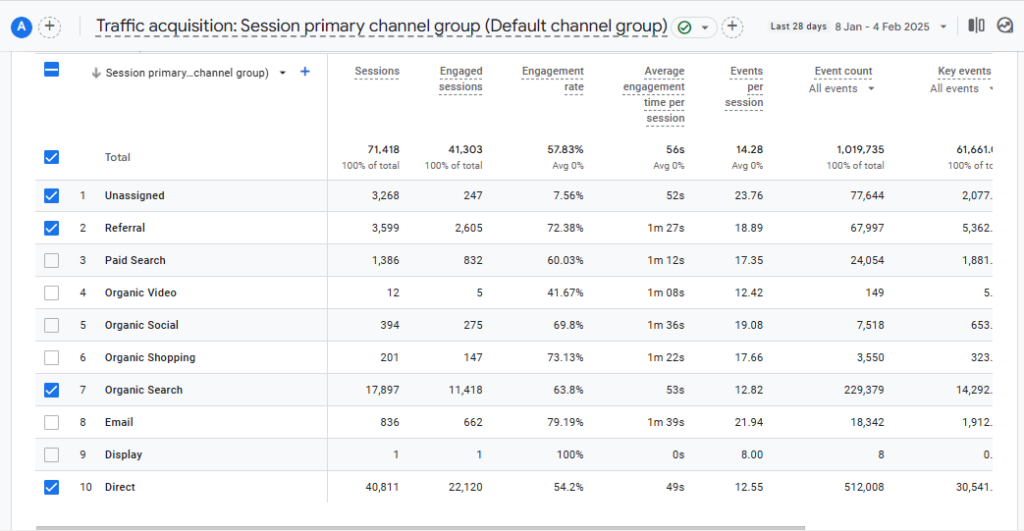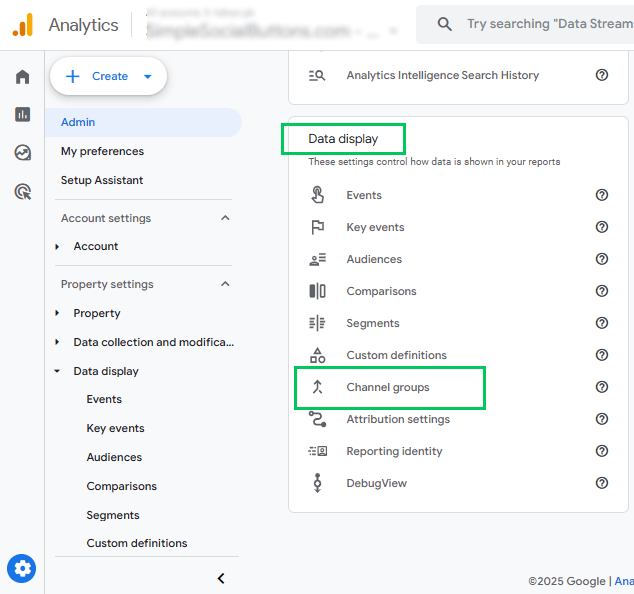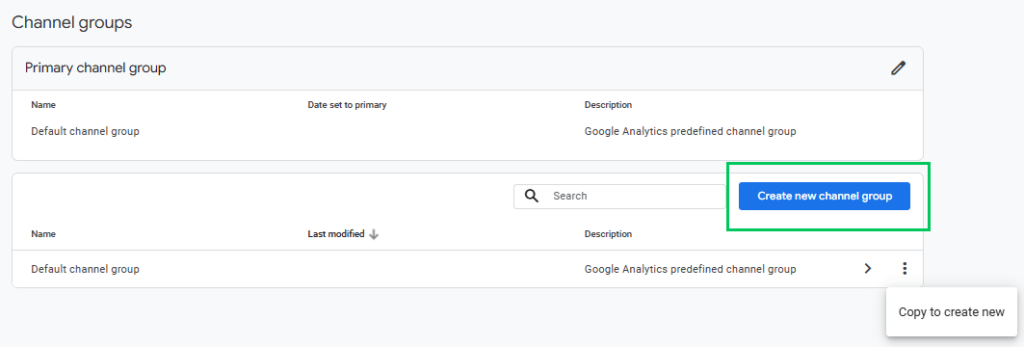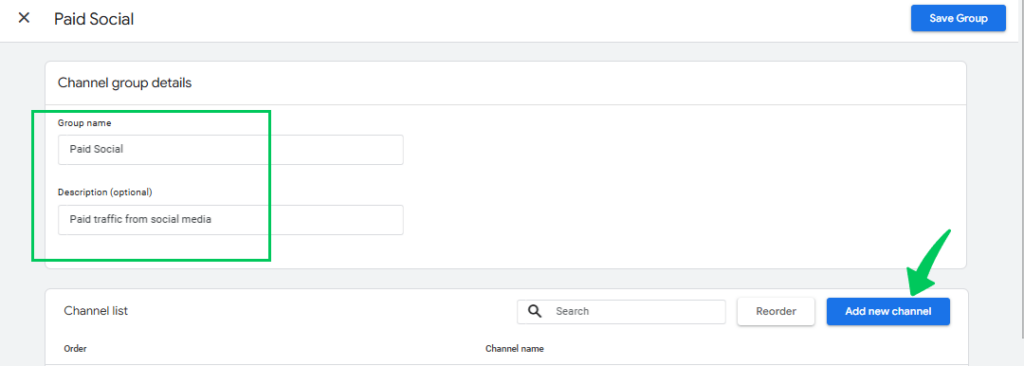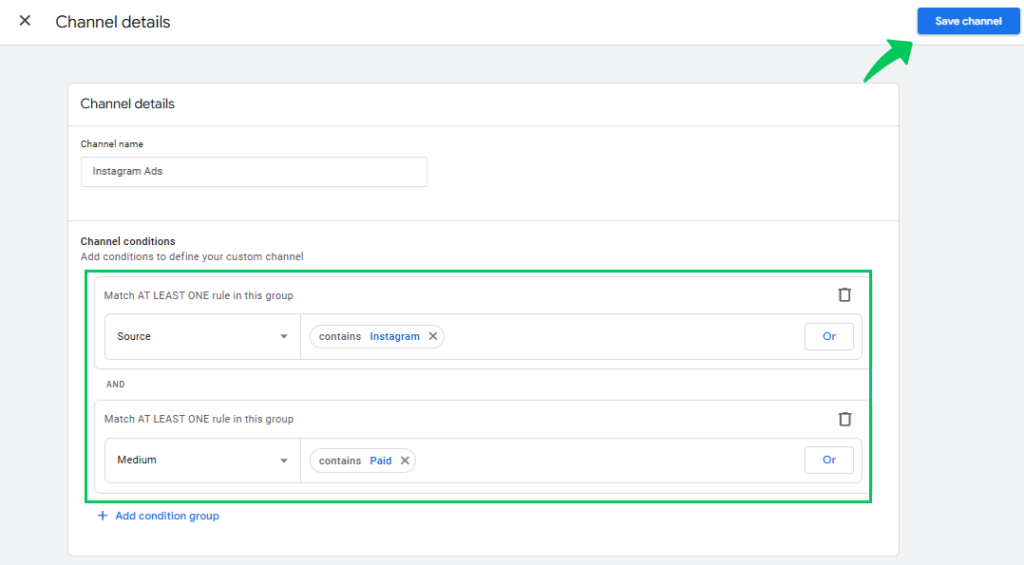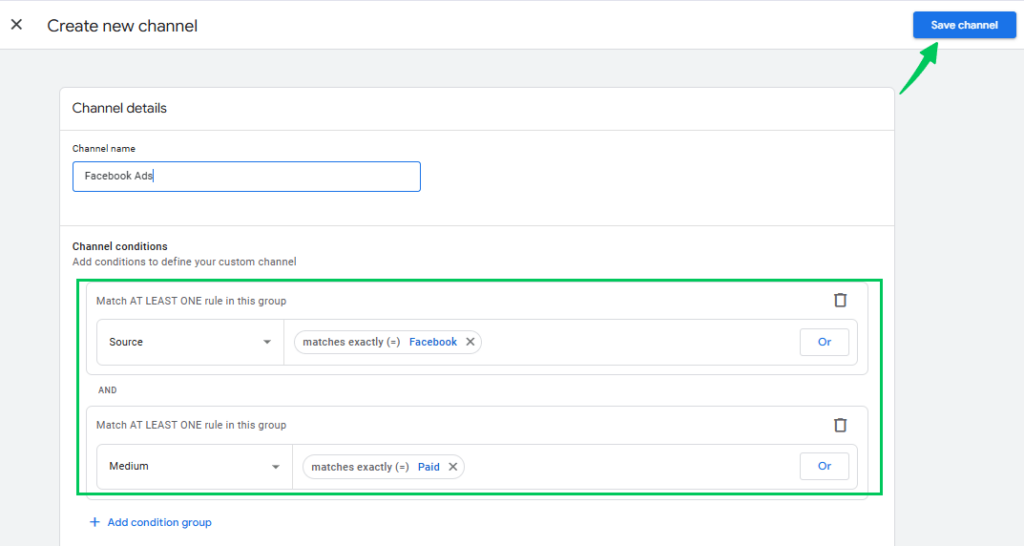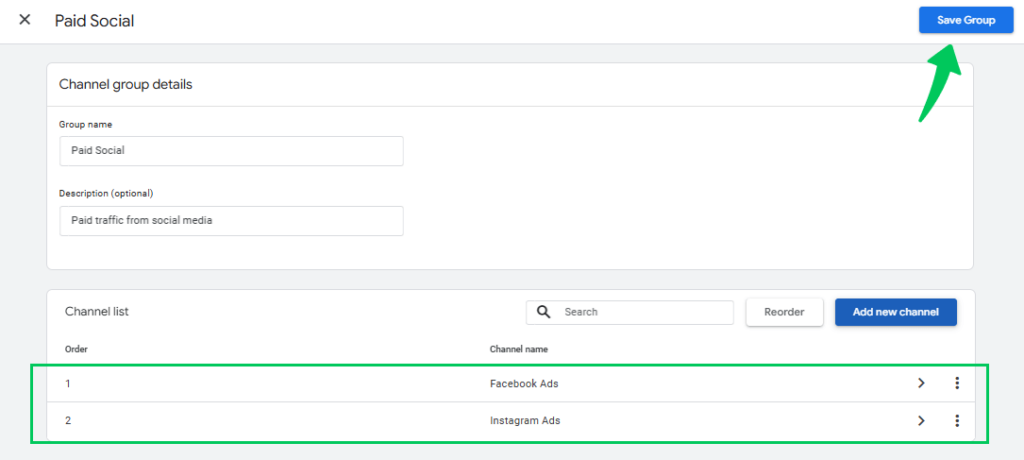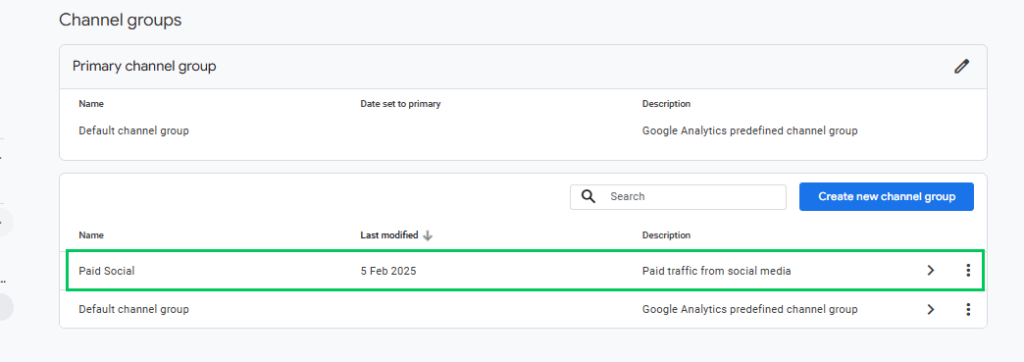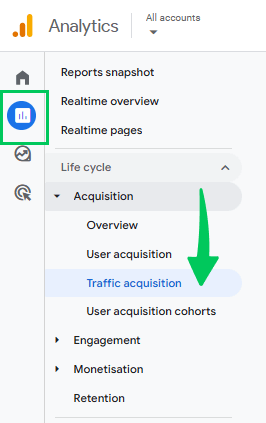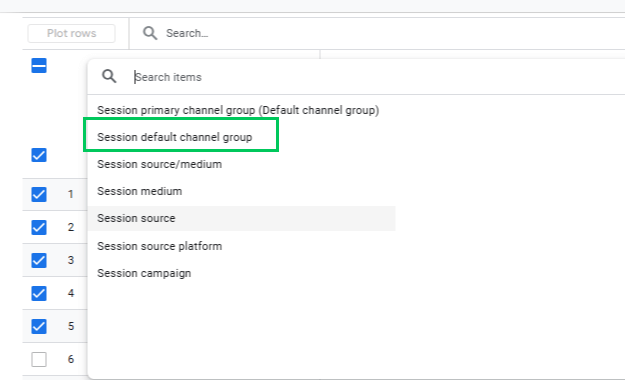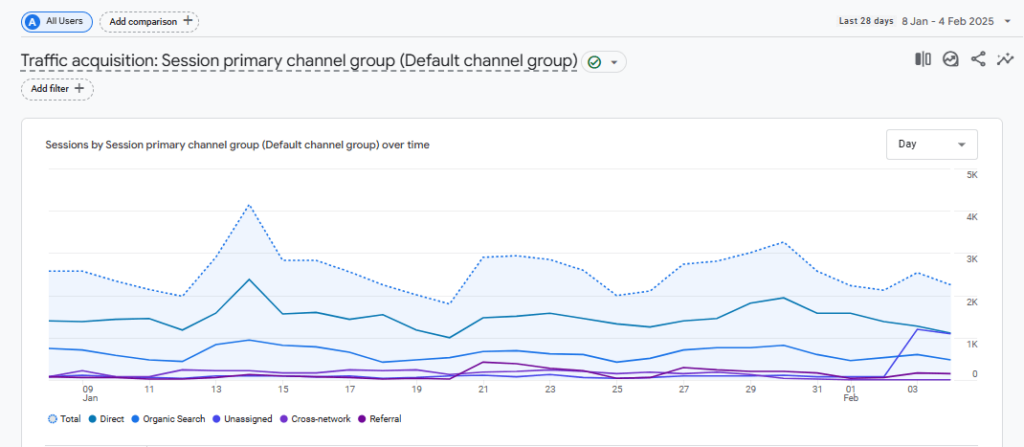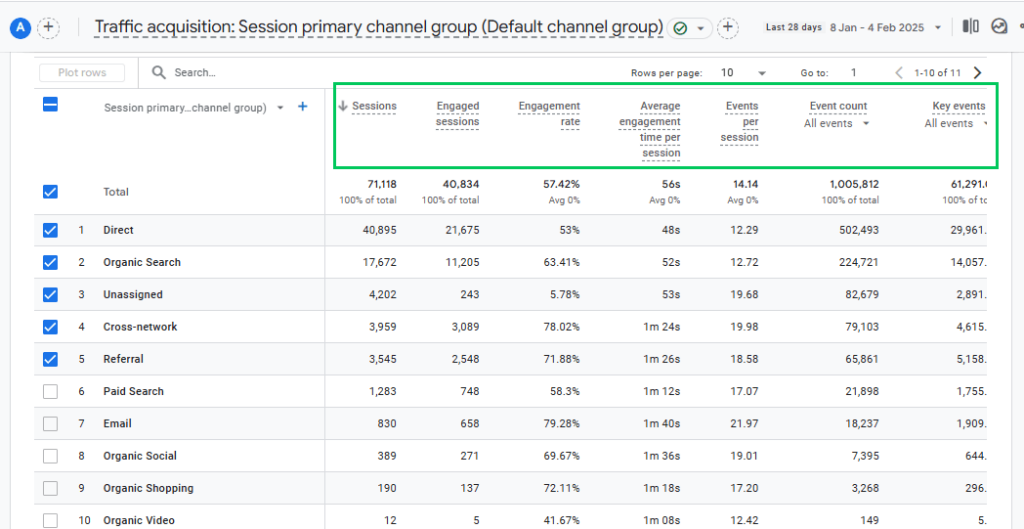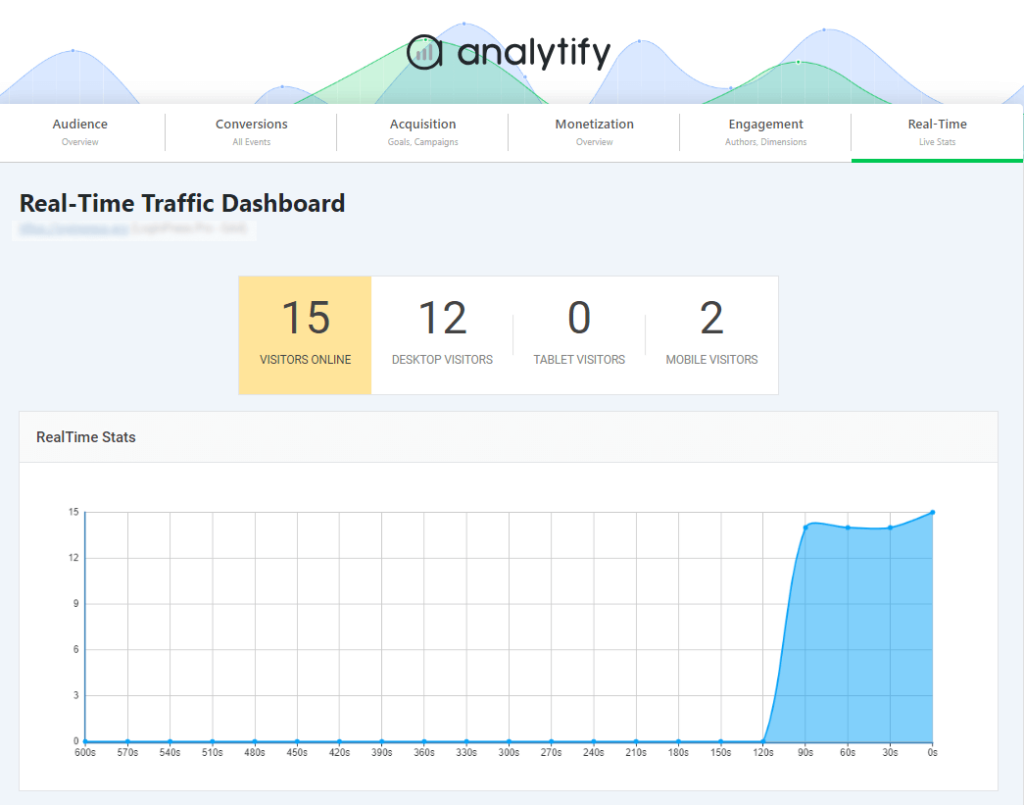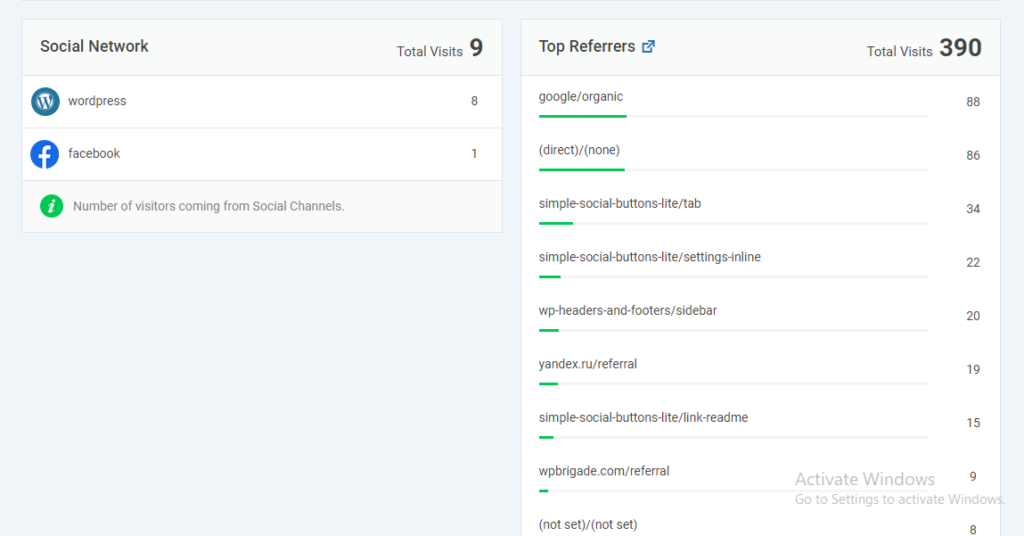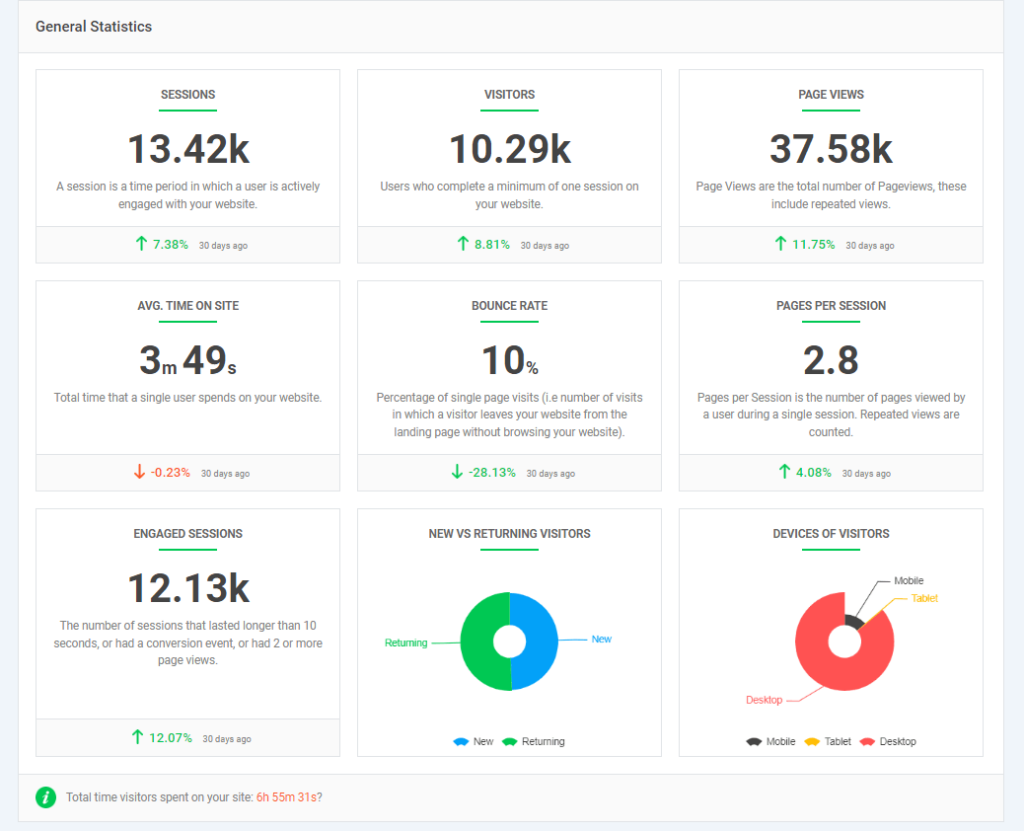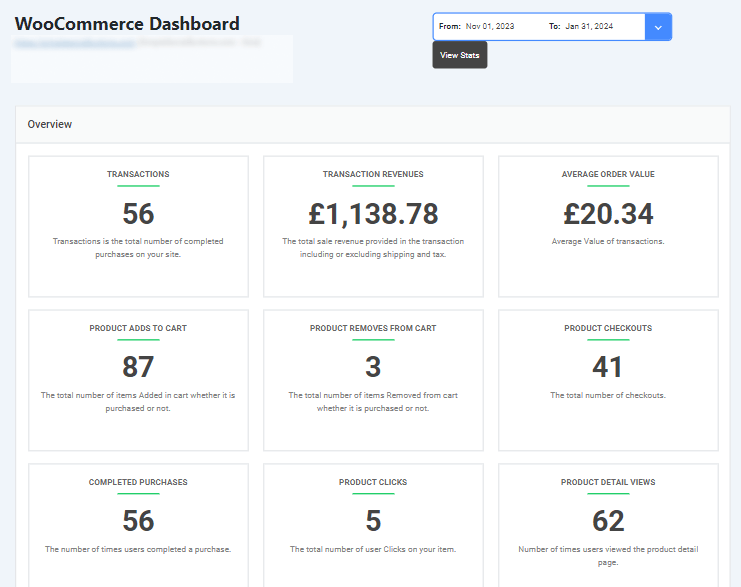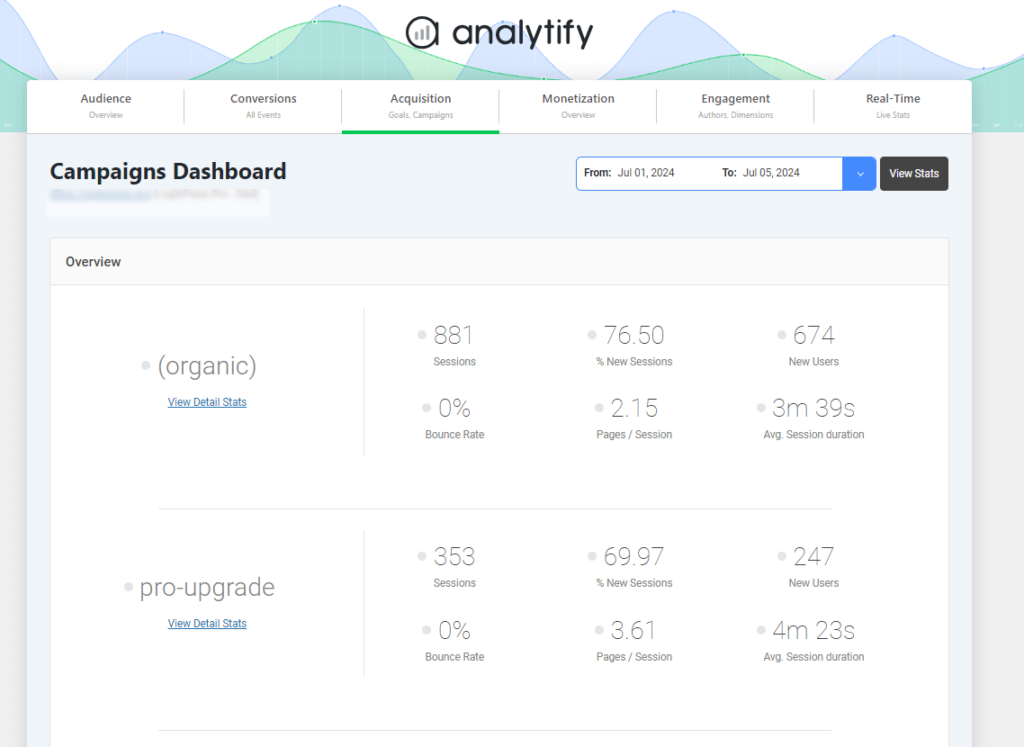
Google Analytics 4 Channel Grouping (Explained)
Have you ever wondered where your website visitors are coming from? Google Analytics 4 channel grouping helps to understand your website traffic sources, which is crucial for effective marketing.
In this article, you will learn about the features of channel grouping in GA4, covering default and custom channel groupings, their limitations, and comparisons. You will also learn how to create custom groups and analyze reports in GA4 to optimize marketing strategies and maximize ROI.
Let’s get started!
Google Analytics 4 Channel Grouping (TOC)
What is Channel Grouping in GA4?
Channel Grouping in GA4 is a system that classifies website traffic into categories like Organic Search, Paid Search, Direct, Referral, and Social based on source and medium. This helps marketers analyze traffic patterns, measure campaign effectiveness, and optimize marketing efforts.
In simpler terms, GA4 channel groupings are like having a super-organized system for understanding where your website visitors are coming from. Imagine your website as a store with many doors. Some people walk in through the front door (maybe they typed your address directly), others come through a side door (maybe they clicked a link on another website), and some go through the back (maybe they found you on a search engine).
Channel grouping in GA4 helps you make sense of all these “doors” by grouping them into categories.
- Examples include:
- Organic Search (all traffic from search engines like Google, Bing, etc.)
- Social (all traffic from social media platforms like Facebook, Twitter, Instagram)
- Paid Search (all traffic from paid ads on search engines)
- Referral (all traffic from other websites that link to yours)
Google Analytics 4 Channel Grouping is more flexible than in Universal Analytics (UA). It simplifies performance tracking, allowing marketers to see which channels drive the most engagement and conversions.
Google Analytics 4 Default Channel Grouping
GA4 Default Channel Grouping is a predefined classification system that organizes traffic to channel groups based on source (where the traffic comes from) and medium (how it arrives) to assign traffic to channel groups.
For example, if the source is “Google” and the medium is “organic,” GA4 automatically classifies the visit under Organic Search. Similarly, traffic with “CPC” (cost-per-click) as the medium is categorized as Paid Search.
This system helps marketers analyze where their traffic is coming from without manual setup. GA4 automatically assigns incoming traffic to these predefined groups, enabling businesses to track performance efficiently and optimize marketing efforts.
GA4 categorizes traffic into the following default Google Analytics channel groups:
- Organic Search: Traffic from unpaid search engine results (e.g., Google, Bing, Yahoo).
- Paid Search: Traffic from paid search ads (e.g., Google Ads, Bing Ads).
- Direct: Visitors who arrive by directly typing the URL or using bookmarks.
- Referral: Traffic from external websites that link to your site (excluding search engines and social media).
- Organic Social: Traffic from unpaid posts on social media platforms like Facebook, Twitter, Instagram, and LinkedIn.
- Paid Social: Traffic from paid social media ads.
- Email: Visitors coming through email campaigns.
- Affiliates: Traffic from affiliate marketing links.
- Display: Visits from display ad campaigns, such as Google Display Network.
- Paid Video: Traffic from paid video advertising platforms like YouTube Ads.
- Cross-network: Traffic from campaigns running across multiple ad networks.
- Other (Unassigned): Traffic that doesn’t fit into predefined categories.
Limitations of GA4 Default Channel Grouping
While GA4 default channel grouping simplifies traffic classification, it also comes with certain limitations that marketers should be aware of:
- Rigid Categorization: Unlike Universal Analytics (UA), GA4 does not allow full customization of channel groups, limiting flexibility for businesses with unique traffic sources.
- Potential Misclassification: Traffic can sometimes be miscategorized, especially if UTM parameters are incorrectly set.
- Unassigned Traffic: Some sources may not fit into existing categories and end up in the Other (Unassigned) group, making analysis difficult.
- Limited Customization: While UA allowed users to create custom channel groupings, GA4 relies primarily on predefined ones, making it harder to tailor reports to specific business needs.
Despite these limitations, Google Analytics 4 default channel grouping provides a structured way to analyze traffic and make informed marketing decisions.
Custom Channel Groups in GA4
GA4 Custom channel grouping allows marketers to create personalized traffic classifications beyond the default channel groupings. By defining their own rules based on source, medium, and UTM parameters, businesses can better organize traffic data to match their specific marketing strategies.
Examples of Effective Custom Channel Groups in GA4:
- Splitting Paid Social: To track ad platform performance create separate groups for Facebook, LinkedIn, and Twitter Ads to track ad platform performance.
- Segmenting Affiliate Traffic: Distinguish between different affiliate sources to evaluate partnerships.
- Branded vs. Non-Branded Organic Search: Separate branded search traffic from non-branded to assess brand awareness efforts.
GA4 Custom channel groupings offer:
- Marketers can analyze traffic sources in more detail, such as distinguishing between different paid ad platforms.
- Businesses can align reports with their unique marketing campaigns and attribution models.
- Custom groups provide more accurate insights into performance, helping optimize budgets and strategies.
How to Create Custom Channel Groups in GA4
Creating custom Google Analytics 4 channel grouping allows you to categorize traffic based on specific criteria. Follow these steps to create a custom Channel groups in GA4:
Step 1: Navigate to the GA4 Admin Panel
- Sign in to your Google Analytics account.
- Select the GA4 property where you want to create the custom channel group.
- In the left-hand menu, click Admin.
- Under the Data Display section, select Channel Groups.
- Click the Create new channel group button.
Step 2: Set Up the Custom Channel Group
To set up a custom channel group, we’ll use Paid Social as an example for better understanding. This guide will walk you through creating a Social Paid Channel Group in GA4, categorizing traffic separately for Facebook and Instagram Ads using the paid medium.
- Name Your Group – Enter a name like “Paid social.”
- Click Add New Channel to create the first rule.
Step 3: Create an Instagram Ads Channel
- Click Add New Channel.
- Name the channel “Instagram Ads.”
- Under Define Rules, set the following conditions:
- Traffic source → Source → contains Instagram
- Traffic medium → Medium → contains paid
- Click the Save channel tab.
Step 4: Create a Facebook Ads Channel
- Name the channel Facebook Ads.
- Under Define Rules, set the following conditions:
- Traffic source → Source → contains Facebook
- Traffic medium → Medium → contains paid
- Click the Save channel tab.
Step 5: Validate and Save
- Review all channels and ensure the rules are correctly set.
- Click Save & Apply to activate the new channel group.
- Congratulations, the new custom channel group has been created successfully!
Your new Social Paid Channel Group will track Facebook and Instagram Ads separately in your GA4 reports, giving you better insights into paid social Ads.
Default vs. Custom Channel Groups: Which One to Use
Choosing between default and custom channel groups in GA4 depends on your reporting needs.
Below is a comparison to help you decide which approach suits your goals:
| Criteria | Default Channel Grouping | Custom Channel Grouping |
| Definition | Predefined traffic classification based on source and medium. | User-defined traffic categorization with customized rules. |
| Flexibility | Limited customization follows GA4’s standard definitions. | Fully customizable based on specific business needs. |
| Ease of Use | Automatically categorizes traffic with no setup required. | Requires manual setup and rule configuration. |
| Accuracy | Standardized but may misclassify certain traffic sources. | More accurate for specific campaign tracking and segmentation. |
| Customization | Cannot modify predefined categories. | Can create tailored groups for better insights. |
| Best For | General traffic analysis and quick insights. | Advanced segmentation and detailed performance tracking. |
| Limitations | Some traffic may fall under Other (Unassigned) if not recognized. | Requires ongoing maintenance and validation for accuracy. |
To enhance GA4 reporting, use default channel grouping for a broad traffic overview and custom channel groups for detailed campaign tracking. Regularly refining custom rules ensures accuracy, while combining both methods creates comprehensive reports.
How to Analyze Channel Grouping Reports in GA4
Custom channel groups in GA4 let you organize your traffic sources in a way that makes more sense for your analysis. So you can see your new channel grouping in reports right away.
Creating custom channel groups in GA4 does not change the default channel group. It also doesn’t change the actual data. Instead, it simply provides a different way to view that data. Here’s how you can analyze the channel grouping report In GA4:
Step 1. Access the Reports
- This is your primary source for channel grouping data. Go to Reports >> Acquisition >> Traffic acquisition.
Step 2. Set the Primary Dimension
- In most reports, you’ll need to set “Session default channel group” as the primary dimension to see your traffic organized by channel groups.
Step 3. Understand the Data
- Data Visualizations: GA4 often presents data in charts and graphs. Use these to grasp trends and compare channel performance quickly.
- Data Table: This table provides detailed metrics for each channel group. You’ll typically see:
- Sessions: The number of visits to your website.
- Users: The number of unique visitors.
- Engagement Rate: How engaged your visitors are (e.g., how long they stay, how many pages they view).
- Conversions: How many visitors complete desired actions (e.g., purchases, sign-ups)?
- Revenue: The revenue generated from each channel group.
Step 4. Analyze and Interpret
- Identify Top Performers: Determine which channel groups drive the most traffic, engagement, and conversions.
- Compare Channel Performance: Analyze how different channel groups perform against each other and assess their cost-effectiveness.
- Look for Trends: Monitor changes in channel performance over time and identify any seasonal patterns.
- Segment Your Data: Apply filters and secondary dimensions to explore performance by device type, user demographics, or specific campaigns.
By following these steps, you can effectively analyze reports of Google Analytics channel groups to gain valuable information about website traffic and improve your marketing ROI.
How Analytify Simplifies GA4 Reports
Analytify is the best WordPress plugin for simplifying GA4 reports. It offers an intuitive dashboard that brings key analytics directly to your website. Easy setup with no coding required. It eliminates the need to navigate complex GA4 interfaces by presenting traffic, user behavior, and conversion data in an easy-to-understand format.
Join 50,000+ beginners & professionals who use Analytify to simplify their Google Analytics!
It automatically categorizes traffic sources into predefined channel groups, such as Organic Search, Paid Search, Referral, and Social, helping users analyze traffic patterns effortlessly. With clear visual reports, marketers can track performance, identify top-performing channels, and optimize campaigns without navigating GA4’s complex interface.
- Real-Time Statistics: View real-time data on your website traffic, including the number of visitors and active users.
- Referral Traffic and Social Network Traffic: Analyze which external websites and social media platforms drive visitors to your site. This will help you identify valuable partnerships, top-performing referral sources, and the impact of social media channels like Facebook, Twitter, and LinkedIn on your traffic and engagement.
- Key Performance Indicators (KPIs): Track crucial metrics, such as conversions, bounce rate, and average session duration, for each traffic channel.
- E-commerce Tracking: If you have an online store, Analytify WooCommerce tracking add-on helps track e-commerce data, including transactions, revenue, and product performance.
- Enhanced Campaign Tracking: Analytify UTM Campaign tracking add-on, track campaign performance, social media traffic, and other marketing efforts with detailed analytics.
- Automated Reports: Generate automated email reports via Email Notifications Add-on that summarise your website’s key performance indicators and can be sent daily, weekly, or monthly.
Integrating Analytify provides deeper details about your website traffic, helping you enhance your marketing efforts and website performance. Unlike GA4 default channel grouping, Analytify offers a more comprehensive and user-friendly solution, making traffic analysis seamless within your WordPress dashboard.
FAQs About Google Analytics 4 Channel Grouping
1. What is the Unassigned channel group in GA4?
The Unassigned channel group in GA4 includes traffic that does not match predefined channel grouping rules, often due to missing or incorrect UTM parameters.
2. What is the default channel grouping in GA4 UTM?
GA4 automatically categorizes traffic based on UTM parameters, assigning sources like “utm_source=google” and “utm_medium=organic” to Organic Search or “utm_medium=cpc” to Paid Search.
3. Does GA4 still use UTM parameters?
Yes, GA4 uses UTM parameters to track campaign sources, allowing marketers to accurately analyze traffic from specific marketing efforts.
4. How to create a channel group in GA4?
To create a custom channel group, go to Admin > Data Settings > Channel Groups, click Create New Channel Group, define traffic rules based on UTM parameters, validate, and save your group.
5. What is a channel group?
A channel group in GA4 is a classification system that organizes traffic sources into predefined categories (e.g., Organic Search, Paid Search, Referral) based on source and medium to help analyze website traffic.
6. What is referral traffic in GA4?
Referral traffic in GA4 includes visitors who arrive at your site by clicking a link from another website, excluding search engines and paid sources. It helps you track external sites that drive traffic to your website.
Final Thoughts: Google Analytics 4 Channel Grouping
In conclusion, it’s essential to understand both the default and custom channel groupings in Google Analytics 4 (GA4) for effective website traffic analysis.
Default groupings categorize traffic sources like organic search and paid ads, while custom groupings allow for tailored reporting based on specific business needs.
Custom groupings offer more accurate information and align analytics with business goals. GA4 can be complex, but Analytify simplifies the process by providing an easy-to-use interface and automatic reporting, making traffic analysis more manageable.
Feel free to share your thoughts or ask questions in the comments below! We’d love to hear how you’re using GA4 and Analytify.

